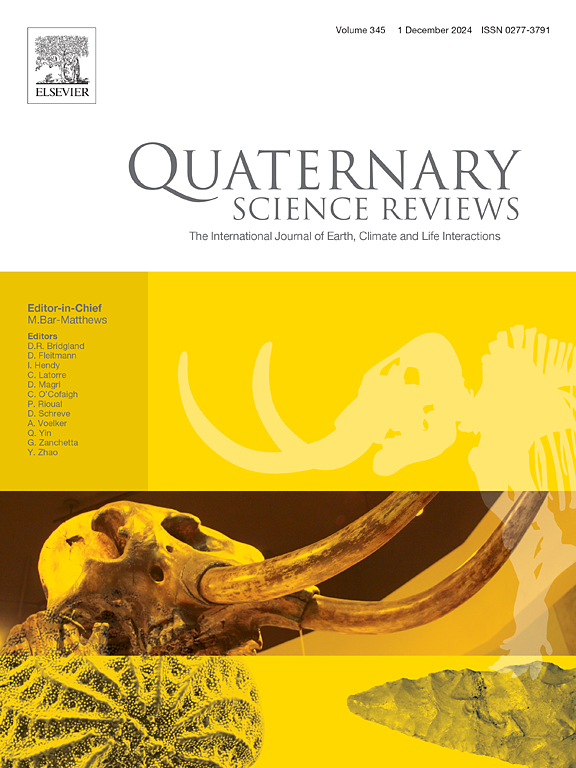过去 400 ka 年黄土--页岩序列的物理力学性质及其在黄土高原中部的古气候控制因素
IF 3.2
1区 地球科学
Q1 GEOGRAPHY, PHYSICAL
引用次数: 0
摘要
探讨黄土-页岩序列的物理力学性质与古气候的关系,有助于为中国黄土高原的工程建设提供重要参考,揭示了第四纪气候研究的重要应用价值。研究选取了黄土高原中部的连续黄土-古沉积序列,测定了其物理力学和化学特征。主要结果表明:(1) 在间冰期,东亚夏季季风加强,粘土矿物的胶结作用使土壤结构在更多降水作用下变得致密,增加了土壤的内聚力。在冰川期,东亚冬季季风较强,黄土在弱成土作用下形成了不稳定的微观结构,增加了可压缩性和可塌陷性。(2)第四纪干冷/暖湿气候交替是黄土与古沉积物物理力学性质和结构强度差异的根本原因,成土作用起着直接的决定性作用。埋藏后的压实作用对黄土-古土壤序列物理力学性质的影响小于成土作用。(3)降水对黄土-页岩序列的剪切强度和压缩性起主导作用,降水和温度共同影响塌陷性。建立了古气候与物理力学性质之间的定量关系。本文章由计算机程序翻译,如有差异,请以英文原文为准。
Physio-mechanical properties of loess-paleosol sequences over the past 400 ka and their paleoclimate controlling factors on the central Loess Plateau
Exploring the relationship between the physio-mechanical properties of the loess-paleosol sequences and the paleoclimate can help provide essential references for engineering construction in the Chinese Loess Plateau, revealing the vital application value of Quaternary climate research. Continuous loess-paleosol sequence in the central Loess Plateau was selected to determine its physio-mechanical and chemical characteristics. The main results show: (1) During the interglacial period, the East Asian summer monsoon intensified, and the cementation of clay minerals made the soil structure dense under more precipitation, increasing soil cohesion. During the glacial period, the East Asian winter monsoon was stronger, and the loess's unstable microstructure was formed under the weak pedogenesis, increasing the compressibility and collapsibility. (2) The alternation of cold-dry/warm-humid climate in the Quaternary is the fundamental reason for the differences in physio-mechanical properties and structural strength between loess and paleosol; pedogenesis plays a direct decisive role. The impact of compaction after burial on the physio-mechanical properties of loess-paleosol sequences is less than that of pedogenesis. (3) Precipitation plays a dominant role in the shear strength and compressibility of loess-paleosol sequences, while precipitation and temperature jointly affect the collapsibility. A quantitative relationship between paleoclimate and physio-mechanical properties was established.
求助全文
通过发布文献求助,成功后即可免费获取论文全文。
去求助
来源期刊

Quaternary Science Reviews
地学-地球科学综合
CiteScore
7.50
自引率
15.00%
发文量
388
审稿时长
3 months
期刊介绍:
Quaternary Science Reviews caters for all aspects of Quaternary science, and includes, for example, geology, geomorphology, geography, archaeology, soil science, palaeobotany, palaeontology, palaeoclimatology and the full range of applicable dating methods. The dividing line between what constitutes the review paper and one which contains new original data is not easy to establish, so QSR also publishes papers with new data especially if these perform a review function. All the Quaternary sciences are changing rapidly and subject to re-evaluation as the pace of discovery quickens; thus the diverse but comprehensive role of Quaternary Science Reviews keeps readers abreast of the wider issues relating to new developments in the field.
 求助内容:
求助内容: 应助结果提醒方式:
应助结果提醒方式:


